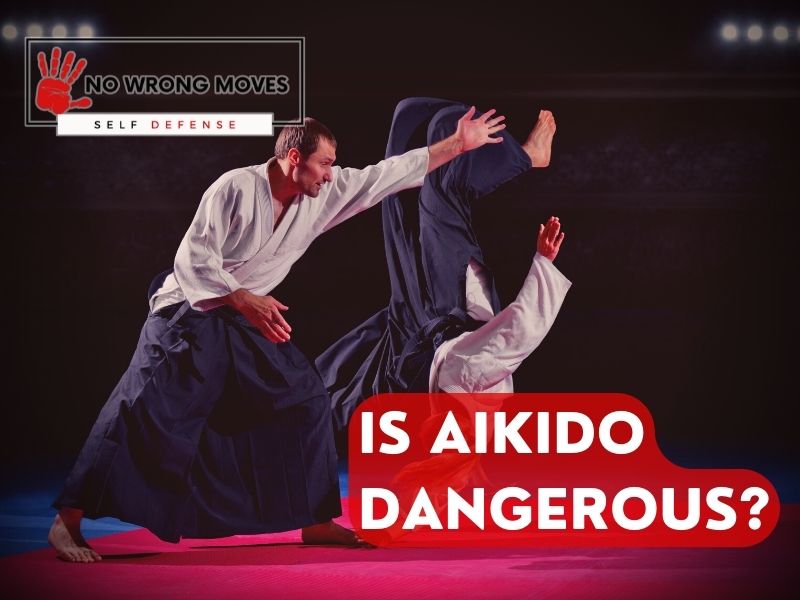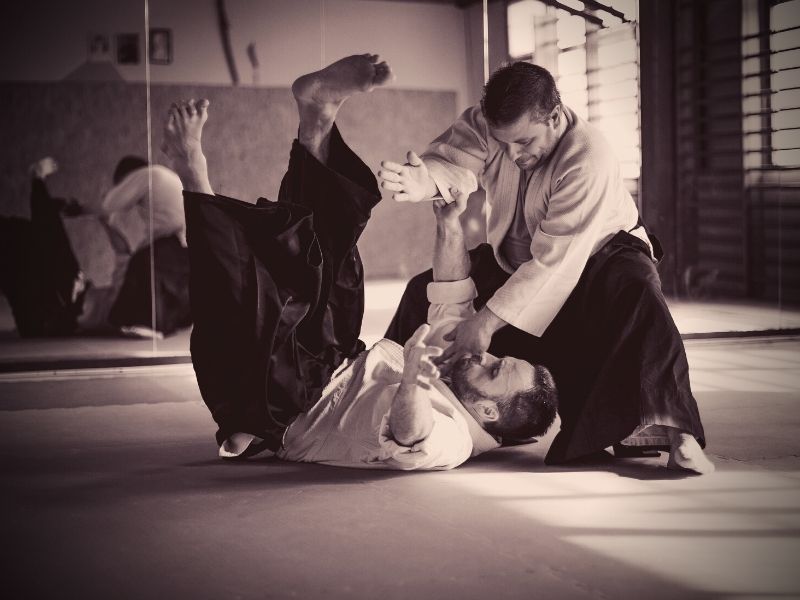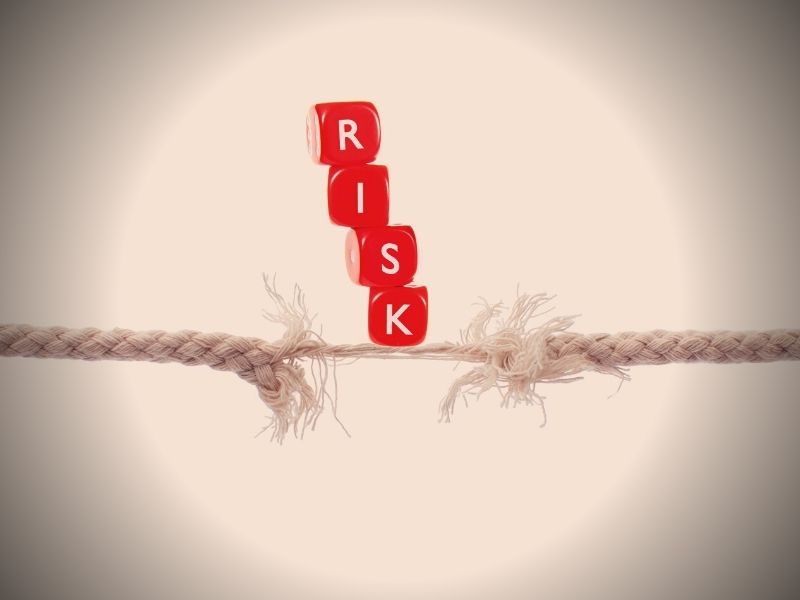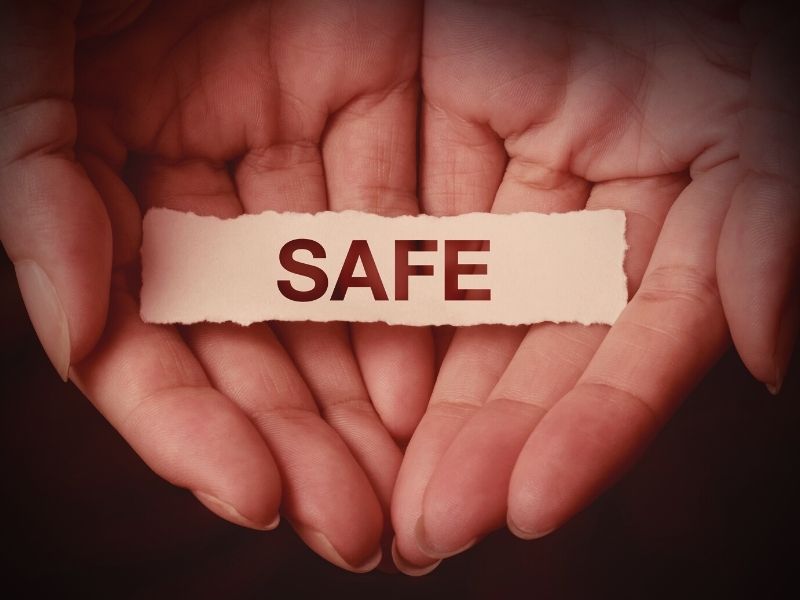
As martial arts like Aikido continue to gain popularity, people naturally end up wondering just how safe they actually are or can be.
Aikido, thankfully, is pretty low on the list of martial arts you'd suspect to be dangerous. Aikido, in particular, is a unique martial art that emphasizes harmony and non-violence.
Still, doubts aren't too easy to dispel. Some may still question whether it's a dangerous art to practice. In this article, we'll explore the risks associated with Aikido and how to minimize them through proper training and precautions.
The Dangers Of Aikido

For what it's worth, Aikido does in fact boast a variety of techniques that can inflict serious harm on an opponent, including bone-breaking moves and techniques that can knock someone unconscious.
But these deadly techniques are rarely employed by Aikidokas, as they run counter to the martial art's philosophy of peace.
Instead, Aikido practitioners rely on throws to take down their opponents. Throws are a crucial aspect of Aikido, and even trained fighters are often not proficient in the art of falling.
A skilled Aikidoka can execute a throw in such a way that the opponent is at risk of sustaining a serious injury.
However, Aikidokas are also trained to control their throws so that their opponents can safely break their fall and avoid injury. On the other hand, an untrained person would likely be overwhelmed, confused, and hurt when thrown, and could be incapacitated for a period of time.
In a life-threatening situation, an Aikidoka might utilize a throw that would cause their opponent to collide with a wall or land on their head to incapacitate them.
As with any martial art discipline, Aikido involves physical contact, which means there is always a potential for injury. However, Aikido practitioners use controlled movements and techniques to minimize the risk of harm to themselves or their partners.
When practicing Aikido, be sure to have a qualified instructor who can teach proper technique and also monitor every session for any unsafe practices.
If conducted right, the risks of injury in Aikido are similar to those in other physical activities such as gymnastics or even team sports.
The Most Common Injuries Sustained In Aikido

Sprains
The most common injury sustained in Aikido is a sprain, typically in the wrist or ankle. These types of injuries can occur when a joint is twisted or stretched beyond its normal range of motion.
Strains
A strain occurs when a muscle or tendon is severely overstretched or torn. This type of injury can happen during throws or changes in direction.
They're different from sprains in that sprains look into injuries of the fibrous tissue that connects bones together, whereas sprains deal with injuries of of muscles.
Bruises
As with any physical activity, bruises can occur during Aikido practice but can be minimized by wearing appropriate protective gear such as elbow and knee pads.
Cuts and scrapes
Injuries such as cuts and scrapes can happen during Aikido practice, especially if the training area or mats are not properly maintained. It is important to inspect the training area before practicing and wear appropriate protective gear.
Additional Risks Involved When Practicing Aikido

Another potential danger of Aikido is the risk of contracting an infectious disease such as skin infections or staphylococcus infection. These risks can be minimized by practicing good hygiene and making sure to clean and disinfect all training equipment regularly.
Practitioners of contact sports are especially at risk for contracting a communicable disease, as they often come in close physical contact with others during training and competitions.
It is important to always shower and wash properly before and after training and to avoid sharing personal items such as towels or water bottles.
However rare they may be, it is still important to be aware of them.
How To Stay Safe When Practicing Aikido

Staying Safe while Practising Aikido
The martial art of Aikido is a wonderful discipline, but just like in any sport or physical activity, safety must always come first. Here are a few tips to keep you safe while engaging in this fantastic martial art.
1. Proper Warm-Up and Cool-Down are Crucial
Start each session with a thorough warm-up to wake up your muscles and get your joints moving. Equally as important is cooling down after your workout. This helps to steadily slow down your heart rate, reduce muscle soreness, and speed up recovery.
2. Know Your Limits
It's great to push ourselves but knowing our limits is essential in preventing injuries. Don't force yourself into advanced maneuvers before you're ready for them.
3. Prioritize Technique Over Power
In Aikido, technique matters more than brute strength. Rushing through moves or using too much force can lead to sloppy form and potential harm.
4. Regular Breaks Are Necessary
Don’t overdo yourself by training for long periods without taking breaks; too much stress on the body can easily result in injury.
5. Use Safety Equipment Wisely
Don't neglect the advantage of safety equipment like mats and protective gear when required.
6. Communication Is Key
Always communicate with your partner especially if something doesn't feel right during practice or if you’re uncomfortable with a certain technique. Remember that keeping safe while practising Aikido isn’t just about preventing physical injury but also about nurturing an environment of respect and awareness.
The Wrap-Up
All in all, practicing Aikido safely can be a monumental task for beginners as it involves various complex movements and techniques.
Aikido takes time to learn because of the following reasons:
- Physical coordination: This martial art form involves the use of entire physical coordination. You need to move your body in sync with its various parts.
- Mental alertness: Aikido demands mental alertness and presence. It's not just about physical strength but also about thinking on your feet.
- Fundamentals: The fundamental techniques of Aikido are intricate and require consistent practice to perfect.
- Safety practices:This is paramount in Aikido. Proper knowledge in implementing safety measures while practicing is critical and takes time to comprehend fully.
In essence, though challenging initially, the journey of learning Aikido can be incredibly rewarding. The road may seem long and arduous but remember that with each passing day you are getting better at it. So hang in there as you master this beautiful art form!
You've learned quite a fair bit about Aikido now. Check out its sister sport, Hapkido, next here!
[author-box-jpx-fitness]
